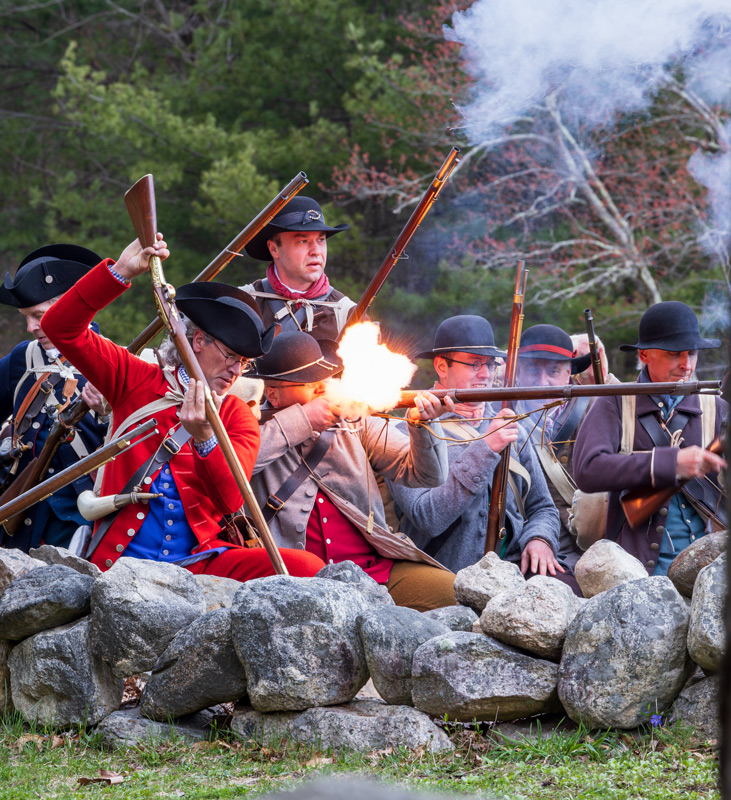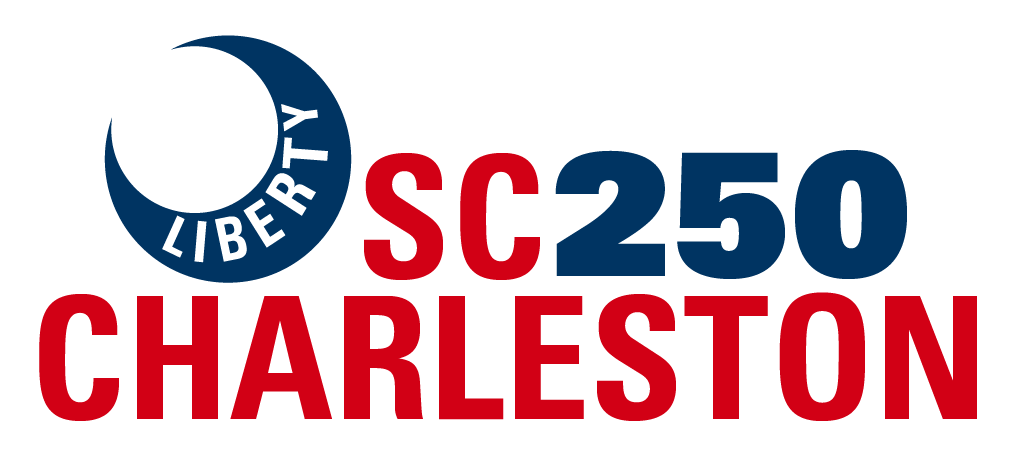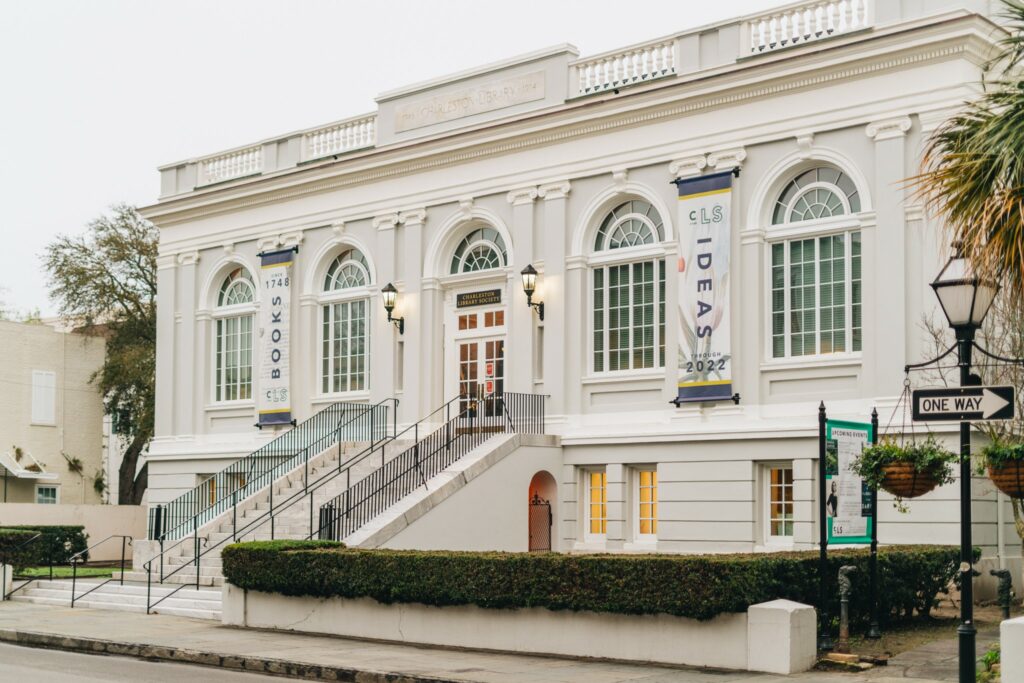Despite its great significance, news about the April 19, 1775 Battles of Lexington and Concord took some time to reach Charleston.
By Rob Shenk
 On April 19, we will commemorate the 250th anniversary of the 1775 Battles of Lexington and Concord. The military engagement between a column of British Regulars and a gathering swarm of New England Minutemen led to what would later be called the “Shot Heard Round the World.” But how long did it take for the news of this stunning event in Massachusetts to reach the ears of those in Charleston, South Carolina?
On April 19, we will commemorate the 250th anniversary of the 1775 Battles of Lexington and Concord. The military engagement between a column of British Regulars and a gathering swarm of New England Minutemen led to what would later be called the “Shot Heard Round the World.” But how long did it take for the news of this stunning event in Massachusetts to reach the ears of those in Charleston, South Carolina?
In today’s world, Charlestonians would have learned of the engagement on Lexington Green or the fighting at the North Bridge in near real-time. Breaking news alerts would have lit up our smartphones as a torrent of tweets, Instagram posts, live-streamed YouTube videos, and emoji-laden texts informed us of the latest happenings. For us in the 21st century, the 976 miles that separate Concord from Charleston would have been bridged in milliseconds. But in 1775 America, news traveled far more slowly. Information in the colonial era travelled only as fast as it could be carried on horseback on brought ashore by sailing ships reaching port.
May 9, 1775 – The News Arrives
On May 9, 1775, the ship Industry sailed into Charleston Harbor. The Industry had departed Salem, Massachusetts on April 25, 1775, and reached Charleston fourteen days later. Master Edward Allen, the Industry’s captain, not only brought his own personal recollections of the crisis in Massachusetts, but he also brought a copy of the April 25 edition of the Essex Gazette newspaper, which included a stirring account of the fighting at Lexington and Concord [See the Essex Gazette newspaper online]. Per the norm of the day, two of Charleston’s newspapers got hold of Captain Allen’s Essex Gazette and reprinted the article within their own pages. First to hit the streets was the South Carolina Gazette and Country Journal, which published the account on the same day as the Industry’s arrival – May 9, 1775. Midway down on page two was the headline declaring, “….we have the following alarming Intelligence.” It then continued with the Essex Gazette’s account….
“Last Wednesday, the 19th of April, the Troops of his Britannick Majesty commenced Hostilities upon the People of this Province, attended with Circumstances of Cruelty not less brutal than what our venerable Ancestors received from the vilest Savages of the Wilderness…”

Towards the end of the account, a reader would learn that “not one Instance of Cruelty, that we have heard of, was committed by our victorious Militia….” and that 39 Minutemen were killed in the fighting with another 19 wounded. Alarming news indeed.
The inclusion of the Essex Gazette’s account was not only stunning news for all in Charleston, but the article’s pro-Patriot bent also made it a curious inclusion in a newspaper that decidedly supported the Crown. The South Carolina Gazette’s own masthead proudly featured the Royal Coat of Arms of Great Britain. The front page of the May 9, 1775 newspaper, no doubt already laboriously laid out in type, included two columns of advertisements for ships ready to depart the port, land available for purchase, rewards for stolen horses, coaches for sale, and notices of enslaved Africans brought to the Charleston workhouse. The right column of the front page included a February 9 editorial article that warned fractious Americans about the perils of war with Great Britain. Only when the paper was opened to the interior pages did one find the “alarming intelligence” from up north.
Following the Essex Gazette account, the South Carolina Gazette also included some remarks from Captain Allen, who claimed that 60,000 Patriots had gathered under arms outside Boston and that there was a resolution to attack the town.
Three days later, the South Carolina and American General Gazette, also published in Charleston, reprinted the same Essex Gazette story in its pages. But unlike South Carolina Gazette, this May 12, 1775, paper included a portion of a letter from a British officer from the 59th Regiment in Boston. In this letter, the British officer declared, “The Vessel that brings you this will no Doubt carry the alarming Account of a Skirmish, or in Fact rather an Engagement, which happened between his Majesty’s Troops and the Provincials on the 19th inst.” This British officer further declared that the “Provincials behaved with unexpected Bravery.”
Of maybe even more concern to the planters and merchants of Charleston was the news that the harbor at Marblehead, Massachusetts, was now blockaded by the British warship Lively. Would Royal Navy warships, some of which had been seen off the Charleston bar, seek to do the same to Charleston? Were British Regulars already on their way to South Carolina to perpetrate similar “cruelties”? Nervous and inquiring minds wanted to know.

Was the News All That Surprising?
So how did South Carolinians respond to this “Alarming Intelligence?” In early 1775, there were largely two factions within the Patriot community in South Carolina – moderates who wished for a peaceful reconciliation with the mother country and a recognition of their grievances, and hardliners who were convinced that the likely next step was military confrontation. On the very day of the battles in Massachusetts, members of the South Carolina Provincial Congress were already secretly reading letters written to Royal officials in Charleston stating that the King and Parliament were ready to take military action against the rebels. Armed with this insight, just two days later, the Provincial Congress created a Secret Committee that raided the Crown’s weapons and gunpowder storage facilities in and around Charleston. Once news of the “Circumstances of Cruelty” was reported in the Charleston newspapers, the Provincial Congress would authorize the creation of its first independent militia regiments in June. So maybe the best way to look at the impact of the news from Lexington and Concord was to see this as just one more indication that war was the more likely outcome.
Learn More: The April 21, 1775 Arms & Gunpowder Raids in Charleston
Two Interesting Asides
 On the front page of the May 12, 1775, edition of The South Carolina and American General Gazette – the second newspaper to break the news in Charleston- is a prominent advertisement for the ship Industry, the same ship captained by Edward Allen that brought the Essex Gazette newspapers and other letters from Massachusetts. Here, Master Allen is advertising that he is ready to accept any freight that needs to be shipped to “Great Britain, or for Amsterdam, Rotterdam, or any Island in the West-Indies.”
On the front page of the May 12, 1775, edition of The South Carolina and American General Gazette – the second newspaper to break the news in Charleston- is a prominent advertisement for the ship Industry, the same ship captained by Edward Allen that brought the Essex Gazette newspapers and other letters from Massachusetts. Here, Master Allen is advertising that he is ready to accept any freight that needs to be shipped to “Great Britain, or for Amsterdam, Rotterdam, or any Island in the West-Indies.”
And just to the left of the column carrying the news of the Battles of Lexington and Concord in the May 9, 1775 edition of The South Carolina Gazette and Country Journal is another article of interest. Here it is reported that on Tuesday last, “an Alegator came close to the Market-wharf and was shot by a Person of this Town.” It then reports that a bystander observed that this action was ominous and “wou’d venture to prognosticate, that every Foe to the Human Species in America, or bold Intruder on their Liberties and Properties will be as effectually subdued.” So even the local reptiles had become tools of political commentary in May of 1775.
Sources:
- The South Carolina Gazette and Country Journal, May 9, 1775 (Charleston Library Society)
- South Carolina and American General Gazette, May 12, 1775 (Charleston Library Society)
- The Essex Gazette, April 25, 1775 (Massachusetts Historical Society – Annotated Newspapers of Harbottle Dorr, Jr.)
- The Newspaper Coverage of Lexington and Concord by Frank Luther Mott (The New England Quarterly Vol. 17, No. 4 Dec., 1944). Accessed on JSTOR
- Paul Revere’s Ride by David Hackett Fischer
_________________________________
Rob Shenk is a board member of SC250 Charleston, a local non-profit established to support commemorative events and educational programs in the Charleston area, and is the Chief Content Officer for Wide Awake Films, a leading producer of history-centered films and museum interactives. Rob previously held senior executive positions at George Washington’s Mount Vernon and the American Battlefield Trust.
Charleston Library Society
These 1775 newspapers are from the Charleston Library Society’s extensive special collections.
S I N C E I T S F O U N D I N G I N 1 7 4 8 the Library Society has continued to strengthen the intellectual and cultural fabric of the Lowcountry as a private lending library and comfortable gathering spot for reading, exploration of treasured collections, scholarly research and lively programs on literature, history, world affairs, and music. After 275 years, the Charleston Library Society remains the oldest cultural institution in the South and second-oldest circulating library in the country.

